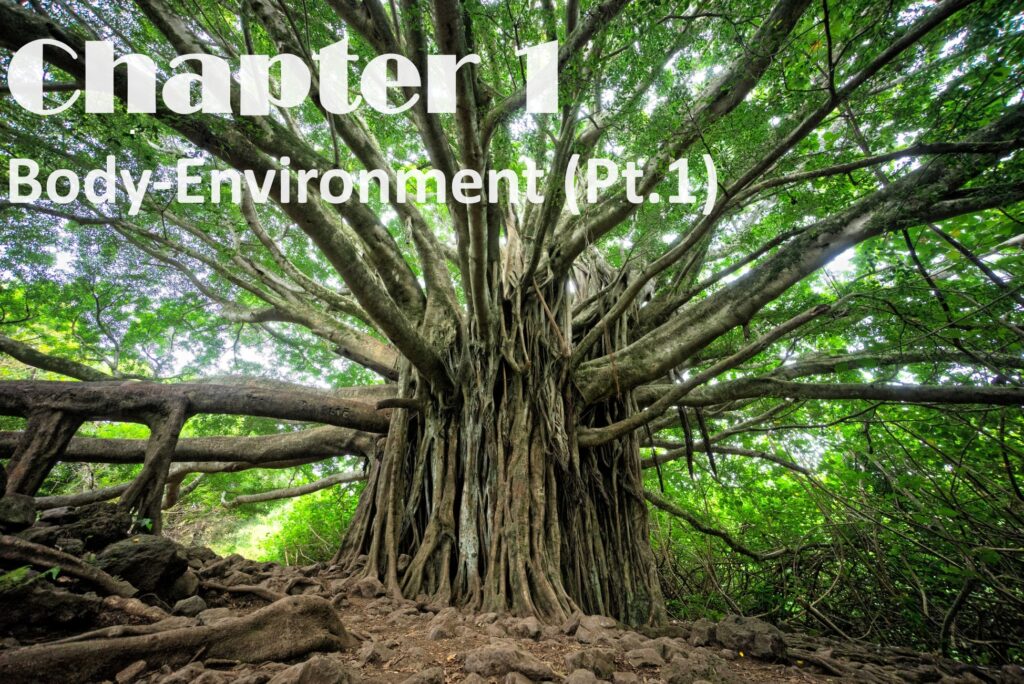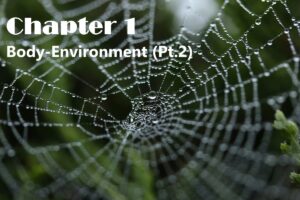Note: Everything written here is the result of many years of study and repeated readings of Gendlin’s book A Process Model. However, what’s written here reflects my own learning and understanding, and does not necessarily express additional layers in Gendlin’s writing. This text is intended to make complex and innovative ideas accessible and supportive of understanding, but it does not replace reading the original work, Gendlin’s book.
You're sitting in front of a computer, trying to write something new and creative. You write a few lines and immediately delete them. Trying again, and it’s not right. Staring at the screen, and no idea comes. The muse is asleep. You feel trapped at your desk, in front of the screen. You try over and over, and nothing comes out. After half an hour of fruitless effort, you leave the computer, take a notebook and pen, and go outside to a public garden. There, on a bench, immersed in green and breathing the open air, an idea comes. You write continuously with great joy and fill two pages full of inspiration.
has this happened to you?
In this post, I will address this example and others from the standpoint of Gendlin’s philosophy. But first I will introduce some concepts and ideas.

The very first words of Gendlin’s book A Process Model are:
“Body and environment are one, but of course only in certain respects.”
At first reading, this may seem strange—in what sense are body and environment one? In our ordinary way of thinking, in the model we are accustomed to, the body is separate from the environment. We can clearly draw the outlines of the body and those of the environment. We can say that the environment affects the body, and also that the body affects the environment. But in what sense are they one?
Gendlin already asserts in the opening paragraph that body and environment are one (body-environment) – but only in certain respects. They do not look the same, and they differ in their properties. So in what sense are they one?
Before we answer this question, Gendlin introduces the conventional way to look at body and environment – from the point of view of an observer.
Environment 1 (En#1) – What are body and environment in the conventional model?
Environment #1 is the environment of “the observer”—the observer standing aside, observing and analyzing the world around him. For example, he observes the behavior of animals or people in his environment. The observer describes, analyzes, defines, creates separations, and thinks in patterns according to theories and perceptions.
The observer’s perspective is a third‑person point of view—the viewpoint of a narrator/observer who tells us what is happening from an external point of view. The basic assumption is that the third‑person point of view is objective, external, and often perceived as “all-knowing.” Our science is built largely upon this perspective.
The third‑person observer can watch the person sitting in front of the computer trying to write (the example above), as well as what happens when he goes outside and writes in the garden. He observes him objectively and describes his behavior from the outside, using his own terms—not the writing person's internal experience. The environment he describes (Environment #1) is his environment, the environment of the observer. For example, he might say: the person writes better because it is quieter here, the bench looks comfortable and is shaded by trees—pleasant to write like this. He may also conclude that walking to the garden increases blood flow, which enhances concentration, etc.
Environment 2 (En#2) – Body and environment are one event
Humans who think in concepts make a clear separation between body and environment. Our thinking is already conceptualized in this way—we look around and identify distinct objects. We perceive ourselves as separate from our environment. But Gendlin draws our attention to the experience of the body as inseparable from its environment.
According to Gendlin’s model, body and environment are one occurrence, one process. How plausible is this idea?
Look at this tiger. For a moment, let’s not view it from the observer’s standpoint. Let’s experience its experience as if we ourselves are the tiger.

The tiger feels the heat as part of its life process; it feels heaviness, fatigue, and heavy heat. It moves in space and feels its paws cold and refreshing with wetness; it continues to move as long as the body is immersed in that coolness and rests in it. The water and the tiger’s body are one event within the tiger’s life process. The tiger is not separate from the water around it. The water participates in the tiger’s life process.
The life process of the tree in the main image is an interaction of its roots, branches, and trunk with the sun, air, soil, and water—all are part of the tree’s life process. They are part of the same event.
Environment 2 — With Examples
Gendlin provides two examples illustrating Environment #2—the environment participating in the living process of a living being.
Example 1 – Breathing
Experiment: Take several deep breaths. Notice the air entering and expanding the chest, and then the contraction of the chest on exhalation. What is responsible for this expansion and contraction?
Typically, we explain the breathing process by separating the air and the body organs responsible for breathing. According to Gendlin’s model, the process is air-entering-the-lungs-and-to-the-blood-cells. The air participates in the body's breathing process. You cannot separate “air entering” from “lungs expanding.” The air has no meaning unless it expands and fills the lungs; the lungs don’t function unless air enters and expands them.
Example 2 – Walking
Experiment: Take a few mindful steps and feel the pressure of your foot on the floor. Notice: the pressure your foot exerts on the ground is exactly the same pressure the ground exerts on your foot.
You can conceptually separate “foot” and “floor.” But you cannot separate the resistance the floor exerts on the foot from the resistance the foot exerts on the floor. Both are inseparable and part of the same event. The ground participates in the life process. In this case, Environment #2 is not the ground that surrounds us while walking, but rather ground‑that‑participates‑in‑walking via its resistance.
Where is the boundary between the foot and the ground? Is the body bounded within the skin-envelope? The pressure from the ground affects not only the sole of the shoe but extends along the foot and the body. Similarly, in the breathing process, oxygen enters the bloodstream, all the way to the cells. The body lies within the environment, but the environment also lies within the body.
How do you experience walking in deep sand? In water? In mud? The foot and environment are part of the same event—they participate together in the walking process.
It’s important to notice that Gendlin does not claim that the foot and the ground are identical or alike. Even when we say they are part of the same event, the foot and the ground are not the same—they merely imply one another. (We will soon learn the concept "imply"; Meanwhile, we could say here that the foot and the ground “expect/point to/hint at” each other.)
Environment #2 participates in a living process. The ground has no meaning for the body if it doesn’t participate in it’s walking, running, crawling, digging, etc.

Body‑Environment are One in the Writing Process
Just like the air in breathing and the ground in walking, the environment participates in the writing process.
Writing is not just a cognitive process. Environmental factors do not each affect the writing process separately (quiet improves concentration, shade is pleasant, walking stimulates blood flow). That is the observer’s point of view, analyzing the writing process from the outside.
The process model views the life process from the perspective of the living organism. My experience of the writing process is internal and indivisible—the body and environment participate in the experience together. I experience the writing process in one way in the environment of the computer, desk, room boundaries, and chair. I experience the writing process differently in the garden environment, on a bench, against a green backdrop, in open air. The environment participates in my life process in a way that I cannot separate them.
Try to sense the participation of your body and environmnet in different life situations. The way to understand Gendlin’s ideas is through feeling and experience, not just intellectual thought.






I'd love to read what you thought: